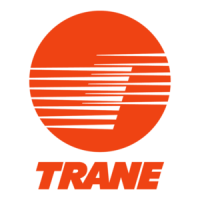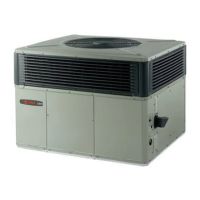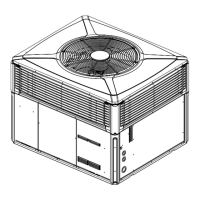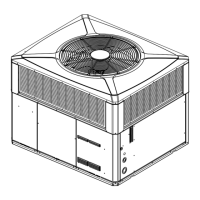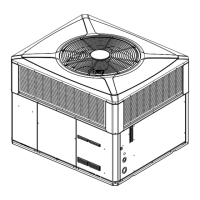Page 3
Installer’s Guide
Read this manual carefully before attempting to install, oper-
ate, or perform maintenance on this unit. Installation and
maintenance should be performed by qualified service techni-
cians only. This unit is listed by Underwriters Laboratory.
Packaged units are designed for outdoor mounting with a
vertical condenser discharge. They can be located either at
ground level or on a roof in accordance with local codes. Each
unit contains an operating charge of refrigerant as shipped.
The indoor fan motor speed adjustment is provided in the
Maintenance section.
Extreme mounting kits are available for slab (BAYEXM-
K003A), curb (BAYEXMK001A), and utility curb (BAYEX-
MK0002B) mountings.
Supplemental heaters are installed separately per the appro-
priate Supplemental Electric Heaters Installer's Guide.
Single power entry kits are installed separately per the ap-
propriate Single Power Entry Kit Installer's Guide.
This guide is organized as follows:
Step 1 - Inspect Shipment
Step 2 - Determine Unit Clearances
Step 3 - Review Location & Recommendation Information
Step 4 - Unit Installation
Step 5 - Unit Startup
Sequence of Operation
Maintenance
Introduction
Contents
Safety Considerations 2
Introduction 3
Step 1-Inspect Shipment 3
Step 2-Determine Unit Clearances 4
Step 3-Review Location & Recommendation
Information 10
Step 4-Unit Installation 11
Ground Level Installation 11
Rooftop Installation -- Curb Mounting 11
Covert Horizontal Airflow to Down Airflow 11
Install Full Perimeter Roof Mounting Curb 11
Lifting and Rigging 12
Placing the Unit on the Mounting Curb 12
Rooftop Installation -- Frame Mounting 13
Rooftop Installation -- No Frame/Curb 13
Ductwork Installation 16
Attaching Downflow Ductwork to Roof Curb 16
Attaching Downflow Ductwork to Roof Frame 16
Attaching Horizontal Ductwork to Unit 16
Condensate Drain Piping 16
Air Filter Installation 16
Electrical Wiring 17
Electrical Connections 17
Electrical Power 17
Disconnect Switch 17
Overcurrent Protection 17
Power Wiring 17
Field Wiring Diagram 18
Control Wiring (Class II) 19
Thermostat Heat Anticipator 19
Step 5-Unit Startup 19
Pre-start Quick Checklist 19
Starting the Unit in the Cooling Mode 19
Operating Pressures 19
Voltage Check 19
Cooling Shutdown 19
Starting the Unit in Heating Mode 20
Heating Shutdown 20
Sequence of Operation 20
General 20
Cooling Mode 20
Heating Mode 20
Final Inspection Checklist 20
Maintenance 20
Owner Maintenance 20
Service Maintenance 21
Cooling Season 21
Heating Season 21
ECM Fan Motor Adjustments 21
Step 1—Inspect Shipment
1. Check for damage after the unit is unloaded. Report promptly
to the carrier any damage found to the unit. Do not drop the
unit.
IMPORTANT: To prevent damage to the sides and top of the
unit when hoisting, use “spreader bars” as shown on page 14.
2. Check the unit’s nameplate to determine if the unit is correct for
the intended application. The power supply must be adequate
for both the unit and all accessories.
3. Check to be sure the refrigerant charge has been retained
during shipment. Remove the Compressor access panel to
access the 1/4" flare pressure taps.
4. If this unit is being installed on a curb, verify that the correct
curb is provided with the unit.
• 4TCY4024 through 4TCY4036 use BAYCURB050A.
• 4TCY4042 through 4TCY4060 use BAYCURB051A.
5. If the unit is being hoisted, accessory kit BAYLIFT002A is
recommended. It includes a kit of four (4) lifting lugs and
instructions.
NOTE: If practical, install any internal accessories to the unit
at the shop.
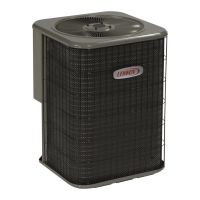
